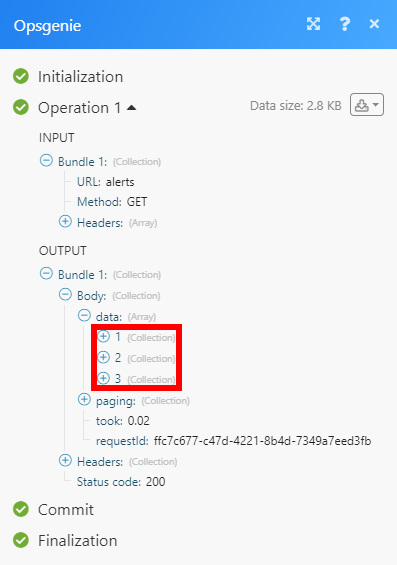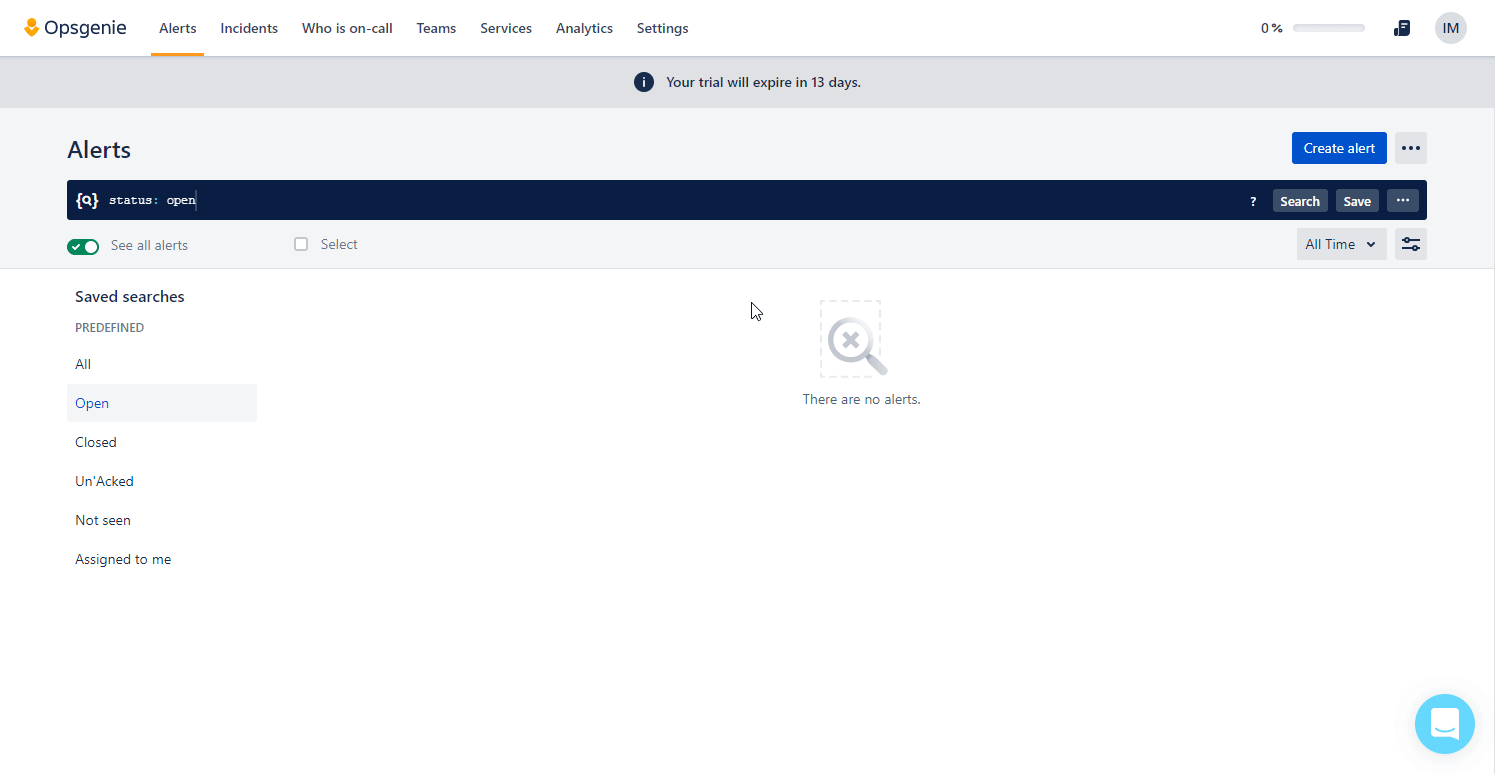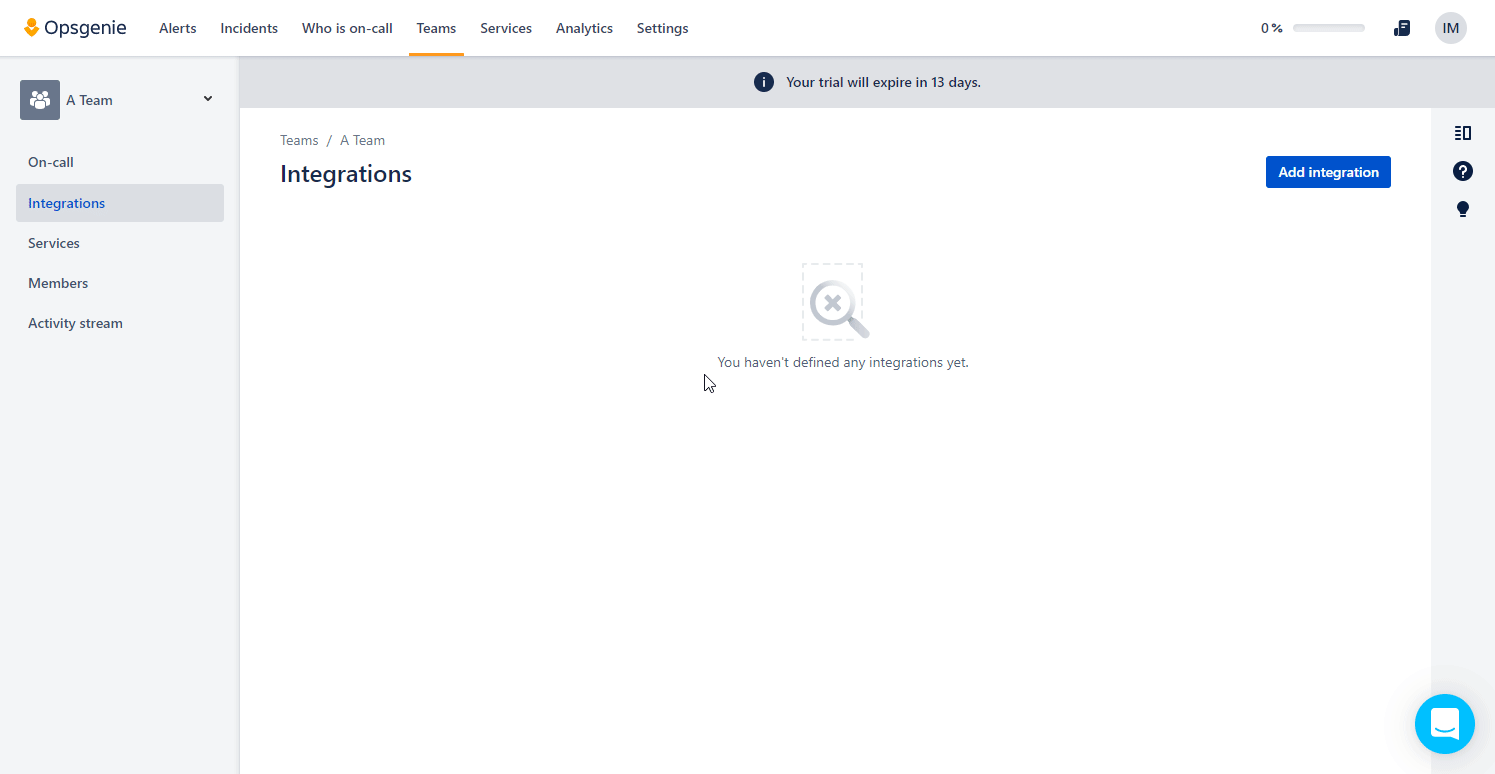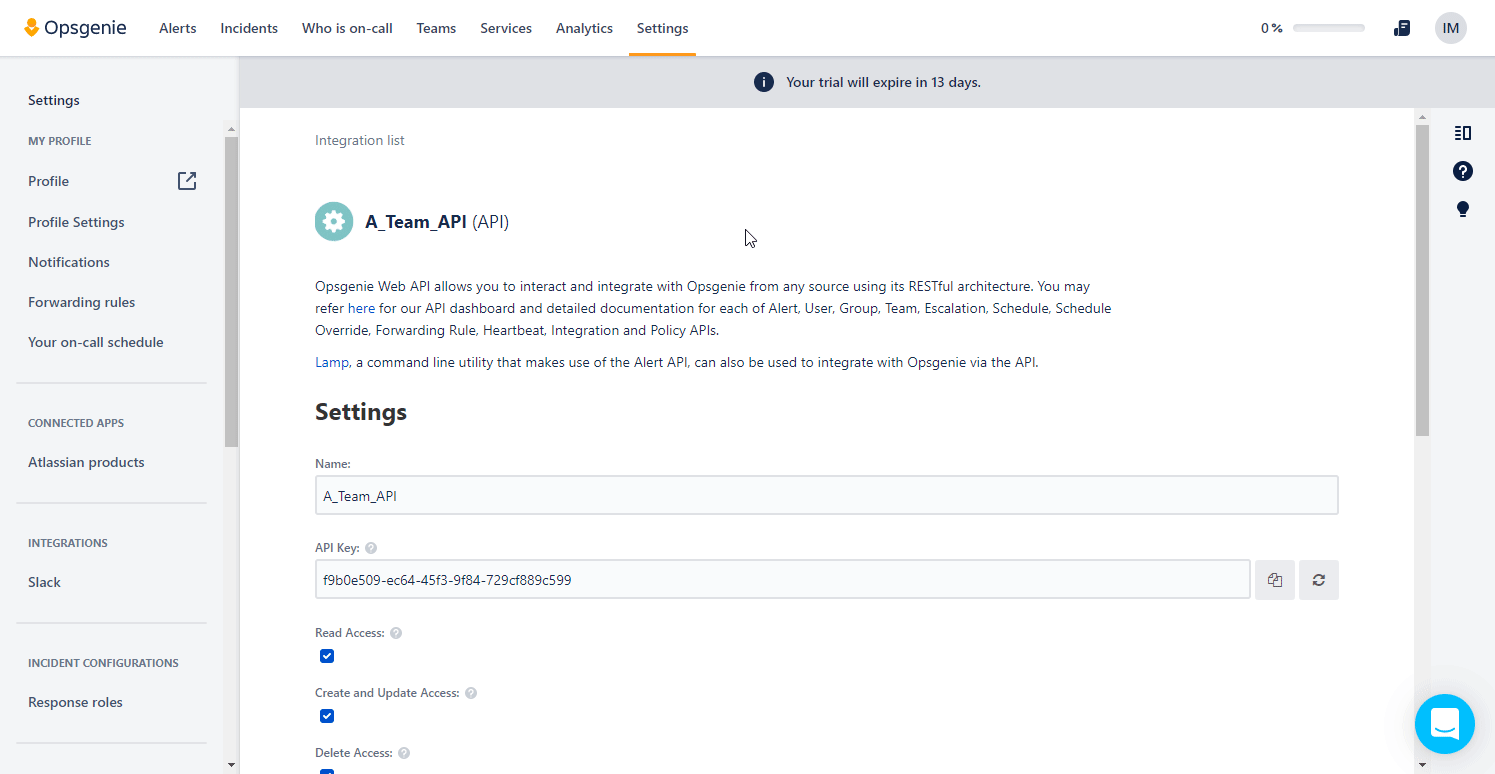| Active with remarks |
|---|
| This application needs additional settings. Please follow the documentation below to create your own connectionUnique, active service acces point to a network. There are different types of connections (API key, Oauth…). More. |
The Opsgenie modulesThe module is an application or tool within the Boost.space system. The entire system is built on this concept of modularity. (module - Contacts) More enable you to create, retrieve, delete alerts, or add tags and notes in your Opsgenie account.
Prerequisites
-
An Opsgenie account
-
A team created in your Opsgenie account
In order to use Opsgenie with Boost.spaceCentralization and synchronization platform, where you can organize and manage your data. More IntegratorPart of the Boost.space system, where you can create your connections and automate your processes. More, it is necessary to have an Opsgenie account. If you do not have one, you can create an Opsgenie account at Opsgenie.
![[Note]](https://docs.boost.space/wp-content/themes/bsdocs/docs-parser/HTML/css/image/note.png) |
Note |
|---|---|
|
The moduleThe module is an application or tool within the Boost.space system. The entire system is built on this concept of modularity. (module - Contacts) More dialog fields that are displayed in bold (in the Boost.space Integrator scenarioA specific connection between applications in which data can be transferred. Two types of scenarios: active/inactive. More, not in this documentation article) are mandatory! |
To connect your Opsgenie account to Boost.space Integrator you need to retrieve the API Key from your Opsgenie account.
-
Log in to your Opsgenie account.
-
Go to Teams and select the team you want to use with Boost.space Integrator, or click Add team (
 ) and create a new team.
) and create a new team. -
Open Integrations and click the Add integration button (
 ).
). -
Go to the API tile and click the Add button.
-
Copy the provided API Key and save the dialog by clicking the Save Integration.
-
Go to Boost.space Integrator and open the Opsgenie module’s Create a connection dialog.
-
Enter the API Key you have copied in step 5 to the respective field, select a region, and click the Continue button to establish the connection.
The connection has been established. You can proceed with setting up the module.
Creates a new alert.
|
Connection |
|||||||||
|
Message |
Enter the alert text content. Max 130 characters. |
||||||||
|
Alias |
Enter the user-defined identifier for the alert. There can be only one “Open” alert with the same alias. |
||||||||
|
Description |
Enter the detailed description of the alert. Max 15 000 characters. |
||||||||
|
Responders |
Add recipients of the alert notification.
|
||||||||
|
Visible To |
Specify teams and usersCan use the system on a limited basis based on the rights assigned by the admin. More that the alert will become visible to without sending any notification.
|
||||||||
|
Actions |
Add custom actions that will be available for the alert, e.g. restart. Max 10 actions. |
||||||||
|
Tags |
Add tags to the alert. Max 20 tags. |
||||||||
|
Details |
Enter key-value pairs to use as custom properties of the alert. |
||||||||
|
Entity |
Enter the name of the entity the alert is related to, e.g. application, server, etc. |
||||||||
|
Priority |
Select or map the alert priority level. |
||||||||
|
Source |
Specify where the alert is coming from. |
||||||||
|
UserCan use the system on a limited basis based on the rights assigned by the admin. More |
Enter the display name of the request ownerCan manage members, managers and owners of a specific space. Can view and manage items. Can edit settings of a given space. More. |
||||||||
|
Note |
Enter the additional note that will be added while creating the alert. |
Retrieves alert details.
|
Connection |
|
|
Identifier Type |
Select whether you want to specify an alert by the Alert ID, Tiny ID, or Alias ID. |
|
Alert ID / Tiny ID / Alias ID |
Enter (map) the ID of the alert you want to retrieve. |
Deletes an alert.
|
Connection |
|
|
Identifier Type |
Select whether you want to specify an alert by the Alert ID or Tiny ID. |
|
Alert ID / Tiny ID |
Enter (map) or select the ID of the alert you want to retrieve. |
|
Source |
Enter the display name of the request source. |
Adds a note to an alert.
|
Connection |
|
|
Identifier Type |
Select whether you want to specify an alert by the Alert ID, Tiny ID, or Alias ID. |
|
Alert ID / Tiny ID / Alias ID |
Enter (map) or select the ID of the alert you want to add a note to. |
|
Note |
Enter the content of the note you want to add to the alert. |
|
Source |
Specify the custom source of the note. |
|
User |
Enter the display name of the request owner. |
Adds tags to an alert.
|
Connection |
|
|
Identifier Type |
Select whether you want to specify an alert by the Alert ID, Tiny ID, or Alias ID. |
|
Alert ID / Tiny ID / Alias ID |
Enter (map) or select the ID of the alert you want to add tags to. |
|
Tags |
Enter tags you want to add to the alert. |
|
Source |
Specify the custom source for the note. |
|
User |
Enter the display name of the request owner. |
|
Note |
Enter the note to the alert. |
Allows you to perform a custom API call.
|
Connection |
||||
|
URL |
Enter a path relative to
|
|||
|
Method |
Select the HTTP method you want to use: GET to retrieve information for an entry. POST to create a new entry. PUT to update/replace an existing entry. PATCH to make a partial entry update. DELETE to delete an entry. |
|||
|
Headers |
Enter the desired request headers. You don’t have to add authorization headers; we already did that for you. |
|||
|
Query String |
Enter the request query string. |
|||
|
Body |
Enter the body content for your API call. |
The following API call returns all alerts in your Opsgenie account:
URL:
alerts
Method:
GET
 |
The result can be found in the module’s Output under BundleA bundle is a chunk of data and the basic unit for use with modules. A bundle consists of items, similar to how a bag may contain separate, individual items. More > Body > data.
In our example, 3 alerts were returned:
 |



